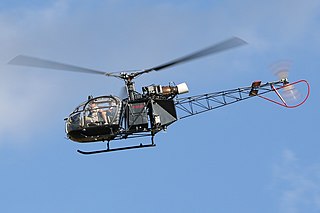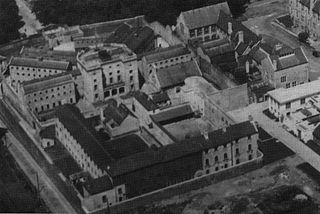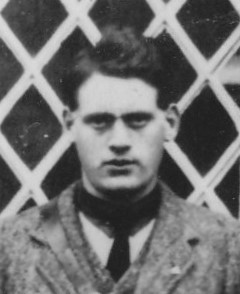
HM Prison Maze was a prison in Northern Ireland that was used to house paramilitary prisoners during the Troubles from August 1971 to September 2000. On 15 October 1974 Irish Republican internees burned 21 of the compounds used to house the internees thereby destroying much of Long Kesh.

A hunger strike is a method of non-violent resistance where participants fast as an act of political protest, usually with the objective of achieving a specific goal, such as a policy change. Most hunger strikers will take liquids but not solid food. Hunger strikers that do not take fluids are named dry hunger strikers.

The 1981 Irish hunger strike was the culmination of a five-year protest during the Troubles by Irish republican prisoners in Northern Ireland. The protest began as the blanket protest in 1976, when the British government withdrew Special Category Status for convicted paramilitary prisoners. In 1978, the dispute escalated into the dirty protest, where prisoners refused to leave their cells to wash and covered the walls of their cells with excrement. In 1980, seven prisoners participated in the first hunger strike, which ended after 53 days.

Mountjoy Prison, founded as Mountjoy Gaol and nicknamed The Joy, is a medium security men's prison located in Phibsborough in the centre of Dublin, Ireland. The current prison Governor is Ray Murtagh.
The blanket protest was part of a five-year protest during the Troubles by Provisional Irish Republican Army (IRA) and Irish National Liberation Army (INLA) prisoners held in the Maze prison in Northern Ireland. The republican prisoners' status as political prisoners, known as Special Category Status, had begun to be phased out in 1976. Among other things, this meant that they would now be required to wear prison uniforms like ordinary convicts. The prisoners refused to accept the administrative designation of ordinary criminals, and refused to wear the prison uniform.

HM Prison Belfast, also known as Crumlin Road Gaol, is a former prison situated on the Crumlin Road in north Belfast, Northern Ireland. Since 1996 it is the only remaining Victorian era former prison in Northern Ireland. It is colloquially known as the Crum.

Séamus Turlough McElwaine was a volunteer in the South Fermanagh Brigade of the Provisional Irish Republican Army (IRA) during The Troubles, who was killed by British special forces while preparing to ambush an army patrol.
Dessie O'Hare, also known as "The Border Fox", is an Irish republican paramilitary who was once the most wanted man in Ireland.

Rita O'Hare was the General Secretary of Sinn Féin, and from 1998 to 2023 the party's representative to the United States.
Jimmy Steele was an Irish republican militant. He was one of the most prominent Irish Republican Army (IRA) men in Belfast after the Irish Civil War who held practically every senior position in the Northern Command of the IRA. Later in life Steele publicly denounced the leadership of the IRA which was a prelude to the split in the IRA. Steele founded and edited several Irish Republican publications. Steele spent a large portion of his life in jails as a result of his actions against British security forces.
Seán McCaughey was an Irish Republican Army (IRA) leader in the 1930s and 1940s and hunger striker.
The Maze Prison escape took place on 25 September 1983 in County Antrim, Northern Ireland. HM Prison Maze was a maximum security prison considered to be one of the most escape-proof prisons in Europe. It held prisoners suspected of taking part in armed paramilitary campaigns during the Troubles, with separate wings for loyalists and for republicans. In the biggest prison escape in UK history, 38 Provisional Irish Republican Army (IRA) prisoners escaped from H-Block 7 (H7) of the prison. One prison officer died of a heart attack during the escape and twenty others were injured, including two who were shot with guns that had been smuggled into the prison.

Angelo Fusco is a former volunteer in the Belfast Brigade of the Provisional Irish Republican Army (IRA) who escaped during his 1981 trial for killing a Special Air Service (SAS) officer in 1980.
Paul "Dingus" Magee is a former volunteer in the Belfast Brigade of the Provisional Irish Republican Army (IRA) who escaped during his 1981 trial for killing a member of the Special Air Service (SAS) in 1980. After serving a prison sentence in the Republic of Ireland, Magee fled to England where he was imprisoned after killing a policeman in 1992. He was repatriated to the Republic of Ireland as part of the Northern Ireland peace process before being released from prison in 1999, and subsequently avoided extradition back to Northern Ireland to serve his sentence for killing the member of the SAS.

The Mountjoy Prison helicopter escape occurred on 31 October 1973 when three Provisional Irish Republican Army (IRA) volunteers escaped from Mountjoy Prison in Dublin, Ireland, by boarding a hijacked helicopter that briefly landed in the prison's exercise yard. The escape made headlines around the world and was an embarrassment to the Irish coalition government of the time, led by Fine Gael's Liam Cosgrave, which was criticised by opposition party Fianna Fáil. A manhunt involving twenty thousand members of the Irish Defence Forces and Garda Síochána was launched for the escapees, one of whom, Seamus Twomey, was not recaptured until December 1977. The Wolfe Tones wrote a song celebrating the escape called "The Helicopter Song", which topped the Irish popular music charts.
Joe B. O'Hagan, aka J.B. O'Hagan was a Provisional IRA member.

Cork County Gaol was a former prison located in Cork, Ireland. The main walls and gate entrance of the prison are today incorporated in the perimeter of University College Cork.

Christopher Patrick Burke was an Irish revolutionary, hunger striker and sportsman from the prominent Drogheda family, the Burkes of Duleek Street. At just 21, he was made officer in command of the Irish Republican Army (IRA) Arsenal in Bailieborough, County Cavan, on the recommendation of General Seán Mac Eoin. During the Irish Civil War, he underwent a hunger strike lasting twenty-three days.
Richard (Richie) Goss (1915–1941) was an executed Irish Republican and one of the few Protestant members of the Irish Republican Army (IRA) in the 1940s. Goss was a leader in a major bombing and sabotage campaign in England (1939–40).
In October 1923 mass hunger strikes were undertaken by Irish republican prisoners protesting the continuation of their internment without trial. The Irish Civil War had ended six months earlier yet the newly formed Provisional Government of the Irish Free State was slow in releasing the thousands of Irish republican prisoners opposed to the Anglo-Irish Treaty.












